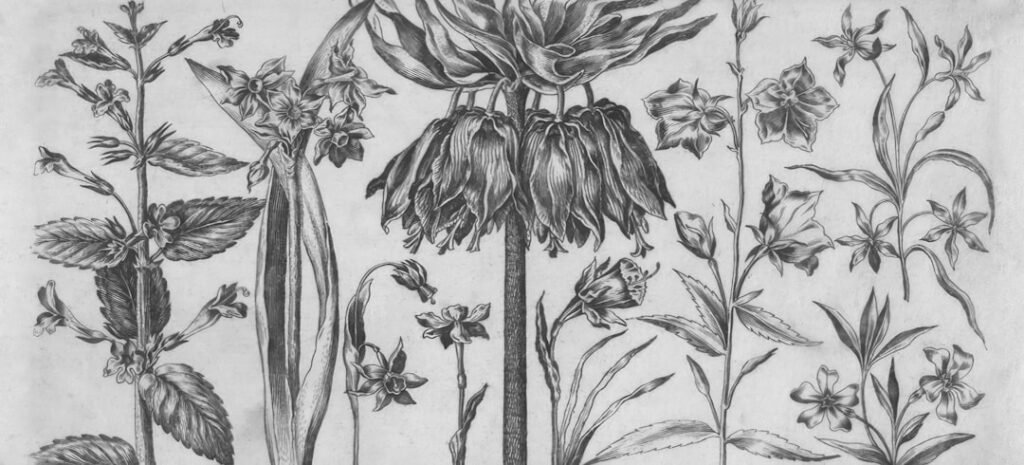Now Reading: Capturing the Moment: When Photo Mode Takes Center Stage
-
01
Capturing the Moment: When Photo Mode Takes Center Stage
Capturing the Moment: When Photo Mode Takes Center Stage

As a passionate gamer, I have witnessed the evolution of video games over the years, and one of the most exciting developments has been the introduction of photo mode. Initially, video games were primarily focused on gameplay mechanics and storytelling, but as technology advanced, developers began to recognize the aesthetic potential of their virtual worlds. The rise of photo mode can be traced back to the increasing demand for immersive experiences that allow players to capture and share their adventures.
This feature has transformed how I interact with games, turning them into canvases for creativity and self-expression. Photo mode has become a staple in many modern titles, from sprawling open-world adventures to narrative-driven experiences. I remember the first time I encountered this feature; it felt like a revelation.
Suddenly, I could pause the action, adjust the camera angle, and manipulate lighting to create stunning visuals that showcased the beauty of the game. This newfound ability to capture moments not only enhanced my appreciation for the artistry behind game design but also fostered a sense of community among players who shared their creations online. The rise of social media platforms has further fueled this trend, allowing gamers to showcase their photography skills and connect with others who share their passion.
Key Takeaways
- Photo mode has become increasingly popular in video games, allowing players to capture and share in-game moments.
- Photo mode enhances the gaming experience by allowing players to appreciate the game’s visuals and share their experiences with others.
- Tips for capturing the perfect in-game moment include adjusting the camera settings, using filters, and experimenting with different angles.
- The art of composition in photo mode involves framing and choosing the right angles to create visually appealing images.
- Photo mode has a significant impact on game marketing and community engagement, as players share their in-game photography on social media and gaming forums.
How Photo Mode Enhances the Gaming Experience
Photo mode has significantly enriched my gaming experience by allowing me to engage with the virtual world on a deeper level. It encourages me to explore every nook and cranny of a game, searching for breathtaking vistas or unique character moments that deserve to be immortalized. This exploration often leads to unexpected discoveries, enhancing my overall enjoyment of the game.
I find myself taking detours from the main questline, captivated by the beauty of a sunset or the intricate details of a character’s design, all thanks to the freedom that photo mode provides. Moreover, photo mode serves as a creative outlet that allows me to express my artistic vision. By experimenting with different angles, filters, and settings, I can create images that reflect my personal style and interpretation of the game.
This creative process not only deepens my connection to the game but also fosters a sense of accomplishment when I capture a particularly striking shot. The ability to share these images with friends and fellow gamers further enhances my experience, as I can receive feedback and inspiration from others who appreciate the art of in-game photography.
Tips and Tricks for Capturing the Perfect In-Game Moment

When it comes to capturing the perfect in-game moment, I’ve learned that preparation is key. First and foremost, I always take the time to familiarize myself with the photo mode controls and features available in each game. Some titles offer extensive customization options, while others may have more limited capabilities.
Understanding these tools allows me to make informed decisions about how to frame my shots effectively. Additionally, I often experiment with different settings before settling on a final composition, ensuring that I make the most of what the game has to offer. Lighting plays a crucial role in photography, and this principle holds true in photo mode as well.
I’ve discovered that certain times of day within a game can dramatically alter the mood of my shots. For instance, capturing a scene during golden hour can add warmth and depth to my images, while nighttime shots can evoke a sense of mystery and intrigue. I also pay attention to the weather effects in games; rain or fog can create unique atmospheres that enhance my photographs. By being mindful of these elements, I can elevate my in-game photography from simple snapshots to captivating works of art.
The Art of Composition: Framing and Angles in Photo Mode
Composition is an essential aspect of photography that I’ve come to appreciate deeply through my experiences with photo mode. One of the first lessons I learned was the importance of framing my subjects effectively. Utilizing techniques such as the rule of thirds helps me create balanced and visually appealing images.
By placing key elements along imaginary grid lines or at their intersections, I can draw attention to specific details while maintaining harmony within the shot. Angles also play a significant role in how I perceive a scene. Experimenting with different perspectives can yield surprising results; sometimes, a low-angle shot can make a character appear more imposing, while a high-angle view might evoke vulnerability.
I often find myself moving around my subject, trying out various angles until I discover one that resonates with me. This exploration not only enhances my photography skills but also deepens my understanding of the game’s environment and characters.
Exploring the Creative Potential of Photo Mode
The creative potential of photo mode is virtually limitless, and I relish every opportunity to explore it. Each game presents its own unique challenges and opportunities for artistic expression. For instance, in some titles, I can manipulate depth of field to create stunning bokeh effects that draw attention to my subject while blurring out distracting backgrounds.
This technique allows me to craft images that feel more cinematic and polished. Additionally, I enjoy experimenting with different filters and post-processing options available in photo mode. These tools enable me to enhance colors, adjust contrast, and apply artistic effects that transform my images into something truly special.
By combining these techniques with my understanding of composition and lighting, I can create photographs that not only capture moments but also convey emotions and tell stories within the context of the game.
The Impact of Photo Mode on Game Marketing and Community Engagement

Photo mode has not only changed how I experience games but has also had a profound impact on game marketing and community engagement. Developers have recognized the value of allowing players to share their in-game photography as a way to promote their titles. Stunning images captured by players often serve as powerful marketing tools, showcasing the beauty and intricacies of a game far more effectively than traditional promotional materials.
Moreover, photo mode fosters community engagement by encouraging players to share their creations on social media platforms and gaming forums. I’ve seen countless communities spring up around specific games where players showcase their best shots, participate in challenges, and even collaborate on themed projects. This sense of camaraderie enhances my gaming experience as I connect with others who share my passion for both gaming and photography.
Photo Mode in Open-World Games: Immersive Photography Opportunities
Open-world games have become some of my favorite playgrounds for exploring photo mode due to their vast landscapes and intricate details. The freedom to roam these expansive environments allows me to discover hidden gems that might otherwise go unnoticed during regular gameplay. Whether it’s capturing a breathtaking mountain vista or an intimate moment between characters in a bustling city, open-world games provide endless opportunities for immersive photography.
In these expansive worlds, I often find myself drawn to specific locations that resonate with me emotionally or aesthetically. The ability to pause the action and frame my shot allows me to appreciate the artistry behind each environment fully. Additionally, many open-world games feature dynamic weather systems and day-night cycles that add layers of complexity to my photography endeavors.
These elements create unique atmospheres that can dramatically alter how I perceive a scene, making each photograph feel like a one-of-a-kind masterpiece.
The Role of Photo Mode in Preserving Gaming Memories
Photo mode has become an invaluable tool for preserving my gaming memories over time. As someone who cherishes nostalgic moments from my gaming journey, being able to capture significant events or milestones within a game is incredibly meaningful. Whether it’s defeating a challenging boss or experiencing an emotional narrative moment, having visual documentation allows me to relive those experiences long after I’ve put down the controller.
Moreover, sharing these captured moments with friends or fellow gamers creates lasting connections based on shared experiences. When I post an image from a memorable gaming session online, it often sparks conversations about our favorite moments or strategies within the game. This exchange not only reinforces my memories but also fosters a sense of community among players who appreciate the same titles.
The Evolution of Photo Mode Features and Technology
The evolution of photo mode features and technology has been nothing short of remarkable since its inception. Early implementations were often basic, offering limited options for framing and editing; however, as technology advanced, so did the capabilities of photo modes in games. Today’s photo modes are incredibly sophisticated, providing players with an array of tools that allow for extensive customization.
I’ve noticed that many modern titles now include features such as adjustable focal lengths, advanced lighting controls, and even motion blur effects that mimic real-world photography techniques. These enhancements empower me to create images that rival professional photography while immersing myself even further in the game’s world. As developers continue to innovate and push boundaries, I eagerly anticipate what future iterations of photo mode will bring.
Community Showcases: Sharing and Celebrating In-Game Photography
One of the most rewarding aspects of engaging with photo mode is participating in community showcases where players share their best in-game photographs. These events often highlight exceptional talent within gaming communities and provide an opportunity for players like me to celebrate each other’s creativity. Whether it’s through social media hashtags or dedicated forums, these showcases foster an environment where artistic expression is encouraged and appreciated.
I find immense joy in browsing through these community showcases; they inspire me to push my own creative boundaries while also allowing me to discover new techniques or perspectives from fellow gamers. Engaging with others’ work often leads to constructive feedback and collaboration opportunities that further enrich my experience with photo mode.
The Future of Photo Mode: Innovations and Possibilities
As I look ahead to the future of photo mode in video games, I am filled with excitement about the innovations and possibilities that lie ahead. With advancements in technology such as virtual reality (VR) and augmented reality (AR), I envision new ways for players like me to engage with photo modes in immersive environments. Imagine being able to step into a virtual world and capture moments from within it as if I were truly part of that universe.
Additionally, I anticipate further integration of artificial intelligence (AI) into photo modes, allowing for automated enhancements or suggestions based on composition principles or lighting conditions. This could streamline the creative process for players at all skill levels while still encouraging artistic exploration. In conclusion, photo mode has transformed not only how I experience video games but also how I connect with fellow gamers and express my creativity.
As this feature continues to evolve alongside technology and gaming culture, I am excited about what lies ahead—both for myself as a player and for the broader gaming community as we celebrate our shared passion for art within virtual worlds.
When photo mode becomes the main gameplay in video games, it opens up a whole new world of possibilities for players to explore and create stunning visuals within the game. This trend is further explored in an article discussing the influence of AI-generated content in gaming, which delves into how artificial intelligence is shaping the future of video game development and player experiences. To learn more about this fascinating topic, check out the article here.



























